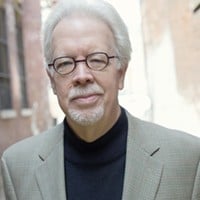When I moved to Cincinnati in 1980, somebody told me that Fountain Square was the city's "living room." I've always liked the analogy, but these days it's tough to get anyone to understand it.
I walked to Fountain Square during a chilly lunchtime earlier this month to see the booths for the Arts in the Heart promotion by Downtown Cincinnati Inc.
They were demonstrating the importance of 20 or so arts organizations to the vitality of our city. It was cold and windy, and two red-and-white striped booths had toppled over. Against the backdrop of the boarded-up Tyler-Davidson Fountain, the square looked more like a war zone.
A week earlier, I had been sitting in the darkened Hall of Mirrors at the Omni Netherland, with 400 graphic and interior designers, building and landscape architects who design natural and built environments. They were in Cincinnati for the annual conference of the Society for Environmental Graphic Design. We were watching a quirky, 30-year-old movie by urban planner William "Holly" Whyte, using Super-8 cameras to make stop-motion documentaries of public spaces.
The stop-motion showed people coming and going, stopping, talking, sitting and visiting. The patterns became obvious, and Whyte used them to make common sense, functional observations about maximizing the design of public spaces.
For example, he surmised that "people sit where there are places to sit." He advocated principles to make public spaces into "human places."
What would Whyte — or those around me I heard marvel about the hotel's Art Deco architectural wonders — think about downtown Cincinnati? Is it functional? How could it be better?
During the conference I crossed paths with Kathy Madden, the speaker who showed Whyte's film. She's one of his disciples, vice president of the non-profit Project for Public Spaces Inc., which he founded.
"Let's walk around," she offered.
We went out the east end of the Carew Arcade, crossed Vine and then Fifth streets to get to Fountain Square's southwest corner. She wrinkled her nose.
"Four lanes of traffic," she said as we crossed Fifth Street, "is not very pedestrian-friendly."
The corners of this intersection work, she said, especially the pleasant and inviting entrance to Tiffany's. But she pointed to the closed brass revolving doors at The Limited. It was 4:30 p.m., and the store still was open for business. Not very inviting.
"There's too much traffic on (Fifth) Street," she went on. "If this square is your 'living room,' it should be totally integrated." She regarded the Westin: "That hotel should have cafes with outdoor seating and people spilling out across the street to the square. That's not happening. Their restaurant (The Albee) is on the second level behind glass and not part of the life of the city. And then you've got four lanes of traffic here, so pedestrians have to go up and over it. It's very vehicle-dominated."
On the square, I offered a half-hearted explanation about the fountain awaiting repairs, surrounded by a wall of green-painted plywood. But the plaza doesn't look much better.
"The whole square could go up a notch," Madden said. "I'm wondering who's taking care of those flowers. First thing I would do is get some plantings into these planters. It's very clear when you come into a public space that the city is not taking care of it. You can see that by the dead trees."
I told her there's been a lot of renovation recently and that the residual hasn't been cleaned up.
"But you have more than 400 people coming in here for an environmental graphics conference," she protested. "If somebody was on top of it, even though they just finished it, they would be getting some things out here so people would say 'Wow!' "
Fountain Square, she said, is lacking in focus right now (assuming no one focuses on the barricaded fountain).
"People need what I call 'cover,' where you're sitting, and you're looking at the fountain, but there are also kids playing in the fountain and then you can really people watch. But you have the 'cover' of the other thing going on."
She also described "triangulation," multiple focuses that create diverse stimulation — the fountain, food venders, other activities.
"If this is really the center of town, shouldn't it be booming right now?"
In the middle of the square, a panhandler stopped us.
"I'm a decent man," he said. "I'm a good Christian. Could you spare me 25 cents?"
I tell him, "Not today."
I had just finished telling Madden panhandling is not a problem here, that it's more on the streets to the north. As the man left, she told me that such behavior diminishes in proportion to the level of activity in public spaces.
I asked for some positives. She told me that moveable seating — green plastic chairs and tables — is a good idea, providing flexibility. She's not too keen on the stage.
"The problem is when it's not in use," but she acknowledges that it could be a good thing if it's used frequently.
She wanted to walk toward the Ohio River, and I parted company, not really wanting to hear her thoughts on stadiums and highway reconstruction.
Back on Fountain Square on a cold, windy Monday with arts brochures flapping against the plywood wall, I'm hoping we get our living room cleaned up pretty soon.






